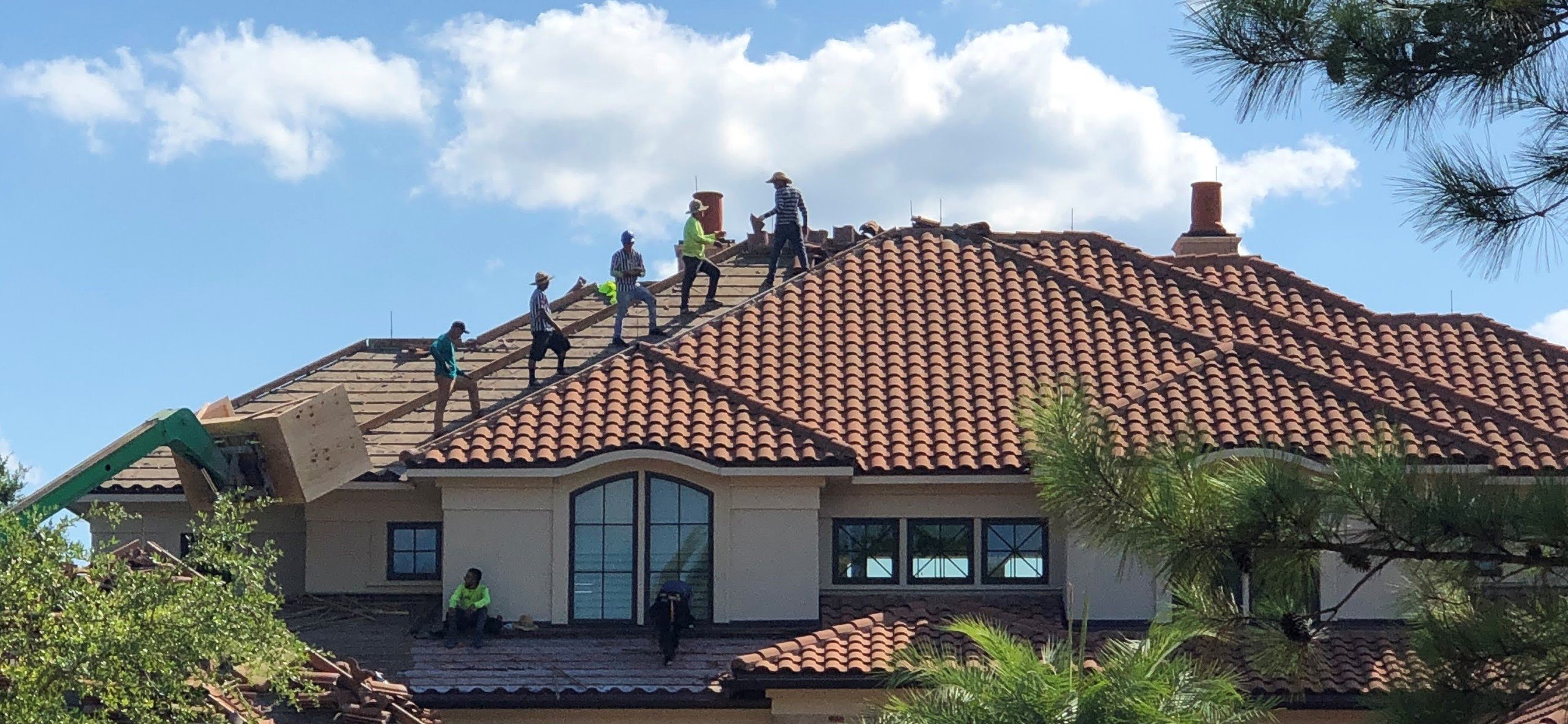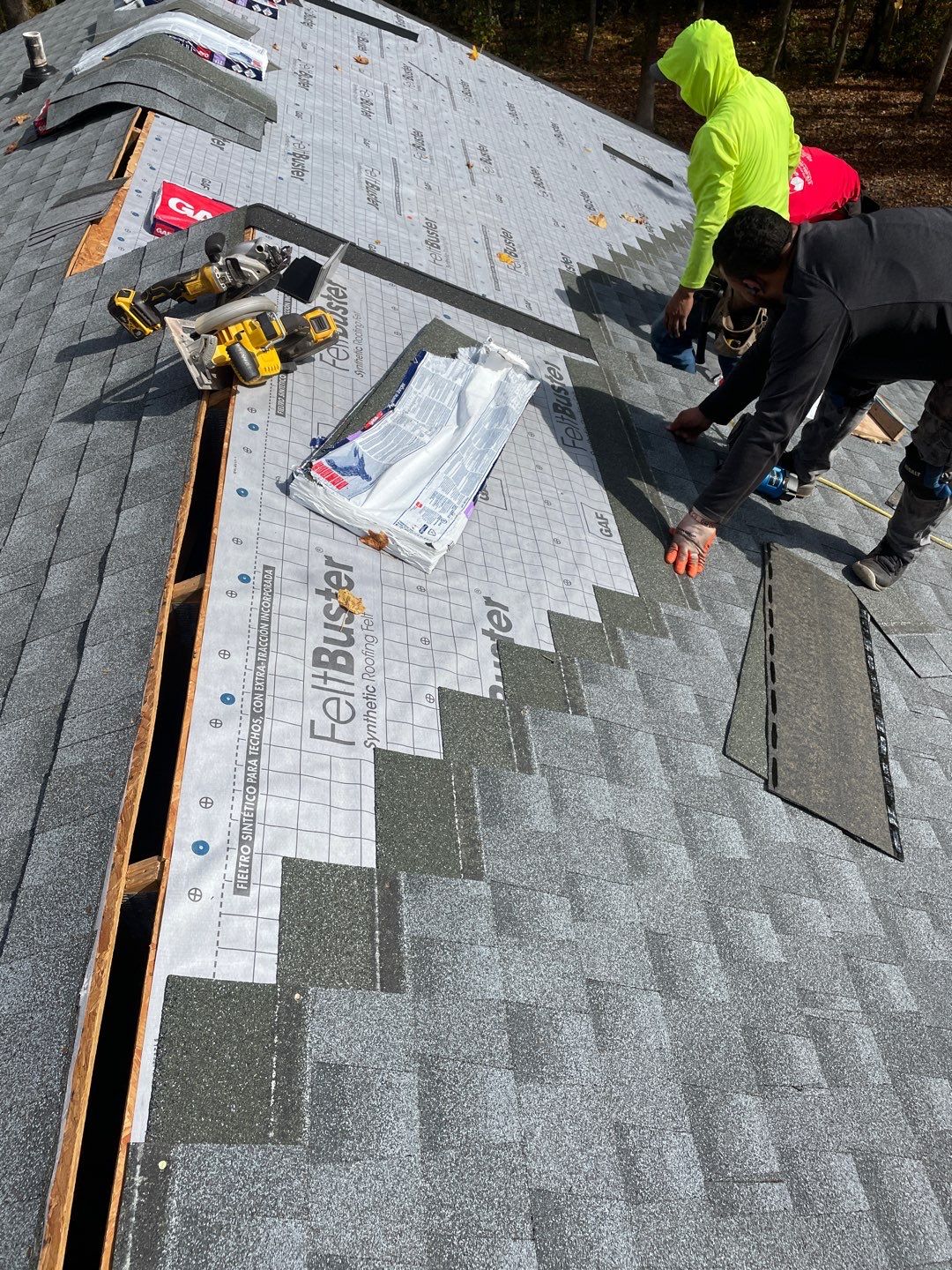Step-by-Step Overview to Finding the Right Roofing Companies in Gainesville
Step-by-Step Overview to Finding the Right Roofing Companies in Gainesville
Blog Article
Finest Practices for Ensuring Appropriate Roof Air Flow
A balanced consumption and exhaust vent ratio, typically 1:300, plays a pivotal duty, with intake vents ideally positioned at the lower edge of the roof for awesome air access and exhaust vents at the top for cozy air exit. Keeping insulation away from vents is essential to avoid air flow constraint.
Understand Ventilation Essentials
Correctly understanding air flow basics is necessary for ensuring the longevity and performance of roofing systems. Effective air flow reduces wetness buildup and temperature extremes in the attic room, both of which can bring about significant architectural damages over time. A well-ventilated roofing assists in stopping usual problems such as mold and mildew development, timber rot, and ice dams, which can endanger the integrity of the roofing products and the underlying structures.
The key objective of air flow is to assist in the movement of air, permitting a regular exchange in between the outdoor and interior settings. This equilibrium is accomplished with a combination of intake and exhaust vents that function together to maintain optimum air flow. Consumption vents, typically situated along the soffits or eaves, allow fresh air to get in the attic room, while exhaust vents, frequently situated at or near the roof ridge, make it possible for warm, humid air to get away.
Key factors affecting the efficiency of roof covering air flow include appropriate positioning, appropriate sizing, and making certain that both consumption and exhaust vents are unblocked. Regular examination and maintenance are critical to determine potential clogs, damages, or inadequacies in the air flow system, therefore guarding the roof's efficiency and resilience.
Kinds Of Roof Covering Vents
Roofing system vents play an essential role in maintaining reliable attic air flow and, by extension, the general wellness of the roof. Various types of roofing system vents are available, each with special benefits customized to particular roof covering requirements. Ridge vents, as an example, are installed along the roofing's optimal, enabling warm, damp air to escape from the attic room. They supply constant air flow and blend flawlessly with the roofline, making them both efficient and visually pleasing.

Soffit vents are mounted under the eaves and operate in tandem with roofing vents to make sure a well balanced consumption and exhaust system. By allowing cooler air to enter from below, soffit vents promote the expulsion of warm air with top vents. Gable vents, situated on the outside wall surfaces of the attic, offer an additional effective option, particularly in homes with saddleback roofs.
Examine Your Present Air Flow

Next, consider the age and problem of your roof covering products and ventilation elements. Older systems might not comply with existing building regulations or might have weakened in time, reducing their performance. Conduct a thorough exam to identify any indicators of wear and tear, such as corrosion, damage, or voids that could endanger the system's performance.
Additionally, Check This Out gauge the attic temperature level and humidity degrees. Heats and moisture can indicate poor ventilation - gainesville fl roofing companies. Utilize a hygrometer and thermostat to obtain precise readings, contrasting them with outside conditions. Relentless inconsistencies recommend prospective concerns that require addressing.
Installation Best Practices
Efficient installation of roof covering ventilation systems is critical for ensuring optimum efficiency and longevity. Appropriate installation starts with understanding the particular ventilation needs of the structure and the roof covering it covers. This includes determining the correct proportion of intake to wear down vents, normally adhering to the 1:300 guideline, which stipulates one square foot of air flow for every single 300 square feet of attic room flooring area.

The positioning of vents is similarly vital. Intake vents need to be mounted at the roofing system's reduced edge, commonly in the soffits, to allow trendy air to go into. Exhaust vents, on the other hand, must be installed near or at the roofing's optimal to promote the exit of warm, moist air. This creates an all-natural airflow that helps keep temperature and dampness balance within the attic room area.
Seal all air vent connections diligently to prevent air leakages and prospective water seepage. Usage top notch materials and adhere to manufacturer guidelines to make sure sturdiness and performance. In addition, integrating ridge vents with baffles can significantly improve air flow effectiveness by protecting against wind-driven rain and snow from entering the attic.
Eventually, precise installation of roofing ventilation systems minimizes prospective problems such her comment is here as mold and mildew development, ice dams, and architectural damage, ensuring the roofing system's stability and the structure's general health and wellness.
Routine Maintenance Tips
Consistency in upkeep techniques is fundamental to guaranteeing the long-term performance of roof covering air flow systems. Routine evaluations are important, ideally executed biannually-- in the spring and autumn. During these inspections, make sure that vents are free of debris, nests, and other obstructions that can hamper air flow. Look for any indications of wetness buildup or mold, as these can show incorrect ventilation or leaks (roofing companies gainesville florida).
Cleaning the vents is another crucial job. Make use of a soft brush or a vacuum cleaner to get rid of dust and debris from consumption and exhaust vents. Beware not to damage the air vent displays or louvers during the process. Furthermore, evaluate the attic room room for any type of indicators of water damages, which can compromise the stability of the roof.
Appropriate insulation is equally important. Make certain that attic insulation does not block the vents, as this can severely limit airflow. Rearrange or change it to keep a reliable obstacle. if any insulation has changed or cleared up.
Last but not least, change any kind of harmed or missing out on parts promptly. Broken vents, cracked shingles, or scrubby blinking can all add to inadequate ventilation and ought to be addressed right away. Regular maintenance makes certain that the roof covering ventilation system works efficiently, consequently expanding the lifespan of the roofing system itself.
Conclusion
Making certain appropriate roofing ventilation is extremely important for preserving the Discover More Here performance and resilience of a roof system. Adherence to the 1:300 consumption and exhaust air vent proportion, coupled with the calculated placement of vents, is important.
A well balanced intake and exhaust vent proportion, frequently 1:300, plays a pivotal function, with consumption vents preferably put at the reduced edge of the roof for cool air access and exhaust vents at the top for warm air departure. Intake vents, usually located along the soffits or eaves, allow fresh air to go into the attic room, while exhaust vents, typically positioned at or near the roofing system ridge, enable warm, humid air to leave.
Soffit vents are set up under the eaves and work in tandem with roofing system vents to make sure a balanced consumption and exhaust system. By allowing cooler air to go into from below, soffit vents assist in the expulsion of warm air via upper vents. Adherence to the 1:300 consumption and exhaust air vent proportion, coupled with the calculated placement of vents, is vital.
Report this page